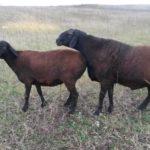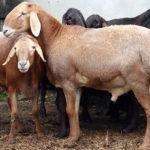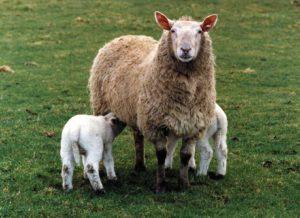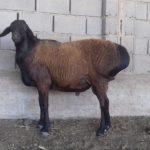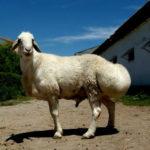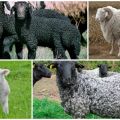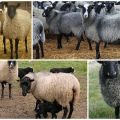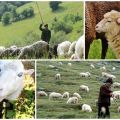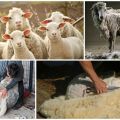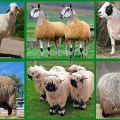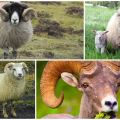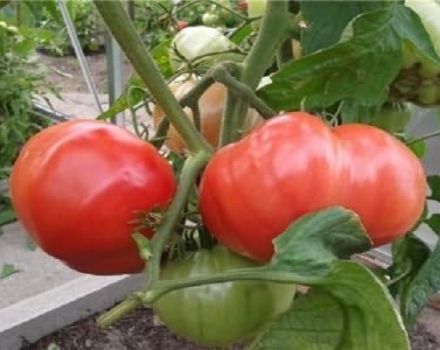Description and characteristics of the rams of the Hissar breed, their pros and cons
The Hissar breed of rams and sheep comes from Asian countries. These animals are immediately recognized by the large fat tail in the tail part of the body. The Gissar meat-lard breed is considered the record holder in terms of weight and reserves of fat tail fat. The body of the animals is covered with coarse wavy hair, which is a good protection against frost in winter. In the summer, the woolen cover is sheared, so that the rams do not faint from the heat and quickly recover.
Origin story
Hissar rams and sheep have been living in Central Asia for centuries. Animals were bred for meat and fat tail fat in Tajikistan, Kyrgyzstan, Uzbekistan and other Asian republics. The breed was created naturally. For centuries, individuals with the best performance have been selected for crossing. In the west of Tajikistan, there is the Gissar Valley, after which the animals are named.
This breed is called unique. The Hissar sheep were bred in isolation, and their appearance was not influenced by representatives of other varieties of rams. These animals are real champions in the slaughter yield of meat and fat tail fat. The live weight of the Hissar sheep is higher than that of the largest Lincoln breed.
For the first time, fat-tailed animals began to be studied at the dawn of the USSR, that is, in 1927-1928. Under the leadership of the Moscow scientist Semyon Azarov, an expedition was sent to the republics of Central Asia to investigate the sheep breeding of this region. Zoologists found out that the Hissar breed grazed for many centuries on high-mountain pastures isolated from the outside world and did not mix with other types of rams.
Description and characteristics of the breed
Hissar rams are considered the largest of the cultivated breeds of this species. They have a coarse coat that warms well in winter. The breed is considered meat-greasy. Animals are bred for meat and fat tail. Their hair was cut insignificantly. The color of the gissars is auburn or black. The coat is rough. Only 1-1.6 kilograms are cut per year. Low-quality animal wool is used only for making felt and coarse felt.
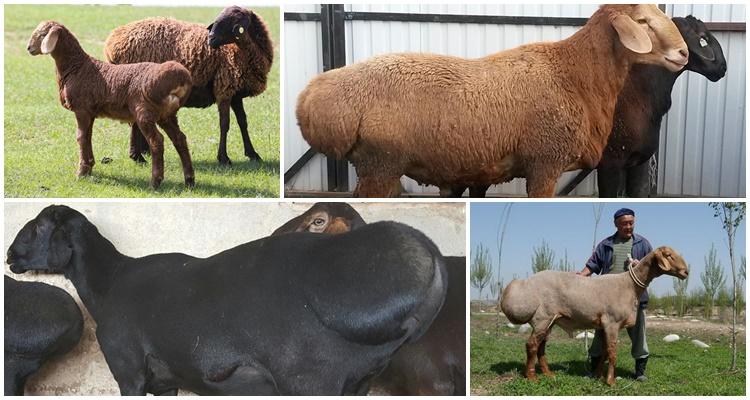
The main feature of the Hissar breed is its unique exterior. The height at the withers in rams reaches 85 cm. Females are slightly lower (75 cm). Adult rams weigh 130, and sometimes even 180 kg. Females weigh 70-100 kilograms. The length of the body is 75-85 cm. The girth of the chest is 34-45 centimeters on average.
Animals have a strong skeleton, a wide, rectangular body, a well-developed, raised, rounded fat tail in the back of the body. The body is densely covered with hair. The size of a fat tail in males reaches 50 cm, in females - 30-40 cm.In this part of the body, fat tail fat accumulates. When slaughtered, the mass of fat from a fat tail is from 5 to 50 kilograms. In young animals, fat tail fat is white, in old ones it is yellowish.
Depending on the size of the fat tail, the Hissar sheep are divided into three groups: meat, meat-fat and fat tail. Animals vary in appearance. The fat tail is the smallest in meat breeds. In the meat-greasy type, this part of the body is pulled up to the level of the back. In fat-tailed sheep, the fat tail stands out strongly, because in this storage up to 60 kg of fat tail fat can accumulate. Hissar rams have an oblong, usually hornless head. Ears are of medium length, hanging down. The bridge of the nose is convex. There is no wool on the head and legs. The tail is missing.
The Hissar breed is perfectly adapted to the climate of Central Asia. In summer, animals are grazed on high-mountain pastures, in winter they descend into lowlands. Rams and sheep are able to travel long distances. They can be in the pasture throughout the warm season. Animals recover quickly.
Females usually give birth to one lamb at a time. After lambing, they give 1.8-2.3 liters of milk per day. Lambs should be milk fed up to 3 months of age. You can make cheeses from the milk of females (for example, feta cheese).
Advantages and disadvantages
Features of maintenance and care
Hissar lambs can graze in the pasture all summer long. Animals gain weight well if they are in the fresh air all day long and eat enough. In winter, rams and sheep must be kept indoors. The animals have excellent immunity, they are not afraid of frosts, but in winter the meadows are covered with snow. In the rain, Hissar rams are also not recommended to be taken outside.
A manger for hay, feeders for grain and drinkers for water should be placed in the room. In the barn, the air temperature is maintained at 10 to 18 degrees throughout the winter. There should be plenty of light in the room. Animals eat mostly during the day. In the dark, they lose their appetite.
Windows are installed near the roof so that animals are not afraid of running dogs or people passing by.
The room where the sheep are kept should be dry, clean and warm. One animal should have 2.5-3 sq. meters of area. The straw bedding is changed as it gets dirty, that is, daily. In case of stall keeping, the sheep are fed three times a day. Water is given twice a day, in between feedings.
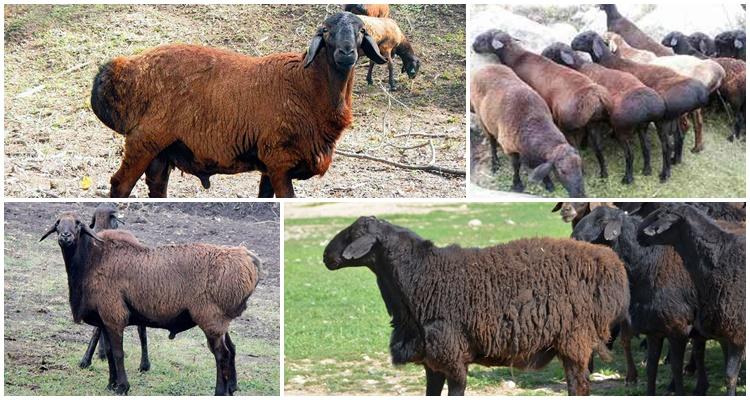
At the age of 3 months, Hissar sheep are vaccinated so that they do not contract infectious diseases. Pets are given antiparasitic drugs once or twice a year. In the spring, before the hot summer months, sheep wool is sheared. Skin wounds are treated with iodine or other antiseptic.
Diet
Hissars, like all ruminants, must consume a diet rich in fiber. Such a diet starts the stomach and promotes the normal functioning of the digestive system. In summer, the main food of sheep is grass. Animals recover quickly on legumes and grasses.
In winter, Hissar lambs need to be given hay or cereal straw.Sheep correct well on boiled potatoes (no more than 200 grams per day). As a top dressing, animals are given up to 300 grams of a grain mixture (barley, corn, oats). In winter, the rams can be fed with sunflower meal and cake. The main source of vitamins in the cold season is vegetables and fruits. The sheep can be fed with finely chopped beets, carrots, pumpkin. To replenish the reserves of vitamins, sheep are given spruce and pine branches, pharmaceutical vitamin preparations. There should always be salt in the trough.
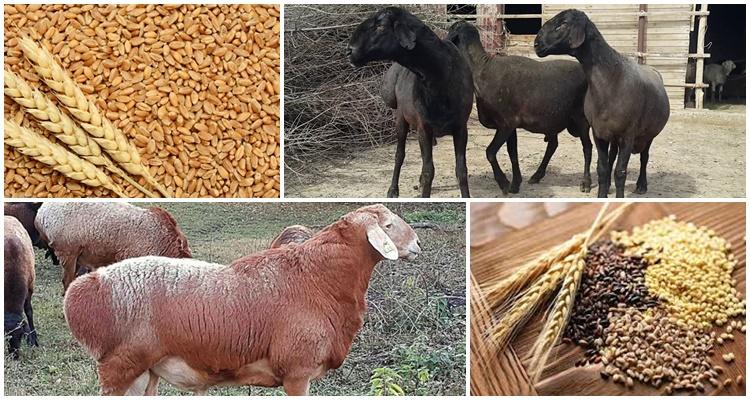
Breeding the breed
Hissar rams reach sexual maturity at 7-8 months. Covering females is recommended later. Usually sheep are mated at 12-18 months. If there is no pedigree ram, then artificial insemination is carried out. Pregnancy in females lasts 150 days. After 5 months, one, less often two, lambs are born. The female gives birth for 30-60 minutes. Lambs are born on their own, without the help of humans. The female gnaws through the umbilical cord and licks the baby. The person may be present during childbirth. In this case, he needs to cut the umbilical cord and clear the newborn's nostrils of mucus. The afterbirth leaves on its own after 1-3 hours.
Immediately after birth, lambs should be fed with mother's milk. Under a milk-fed female, animals should be up to 3 months of age. Then they are gradually transferred to plant foods.
What are the diseases of the Hissar sheep
This breed has excellent immunity. In their homeland, on high-mountain pastures, the Hissars hardly get sick. Lamb simply do not come into contact with other animals, including infectious ones.
In farms, ideal conditions for the cultivation of the Hissar breed cannot be created. Sheep can become infected from other animals, through grain, hay, grass in the meadow. At the age of 3 months, it is recommended to vaccinate them against the most dangerous infectious diseases that cause the death of the herd (foot and mouth disease, anthrax, smallpox, brucellosis). The rams are given antiparasitic prophylaxis twice a year.
Breeding prospects
Hissar rams and sheep are bred in the republics of Central Asia (Tajikistan, Uzbekistan, Kyrgyzstan, Turkmenistan, Kazakhstan). There are small herds of these animals in many regions of Russia. Gissars are also grown in Ukraine. This productive meat and lard breed is mainly bred in places where the population is used to eating lamb. Representatives of the Muslim faith traditionally eat sheep meat.


